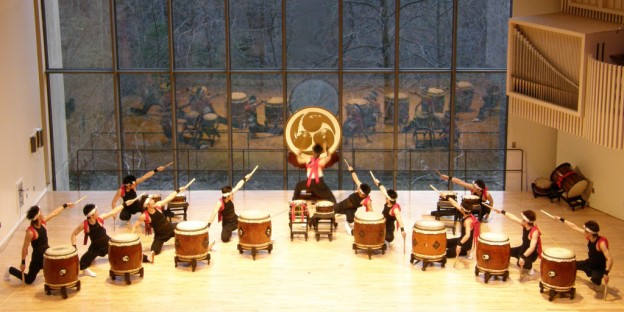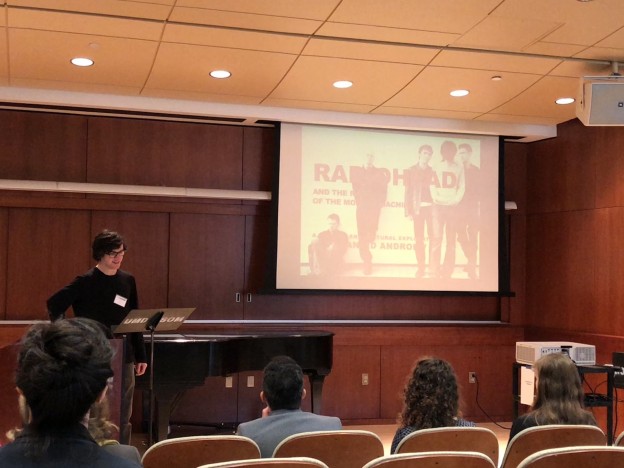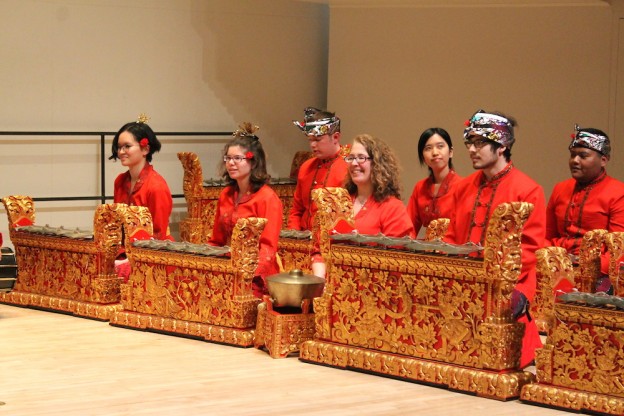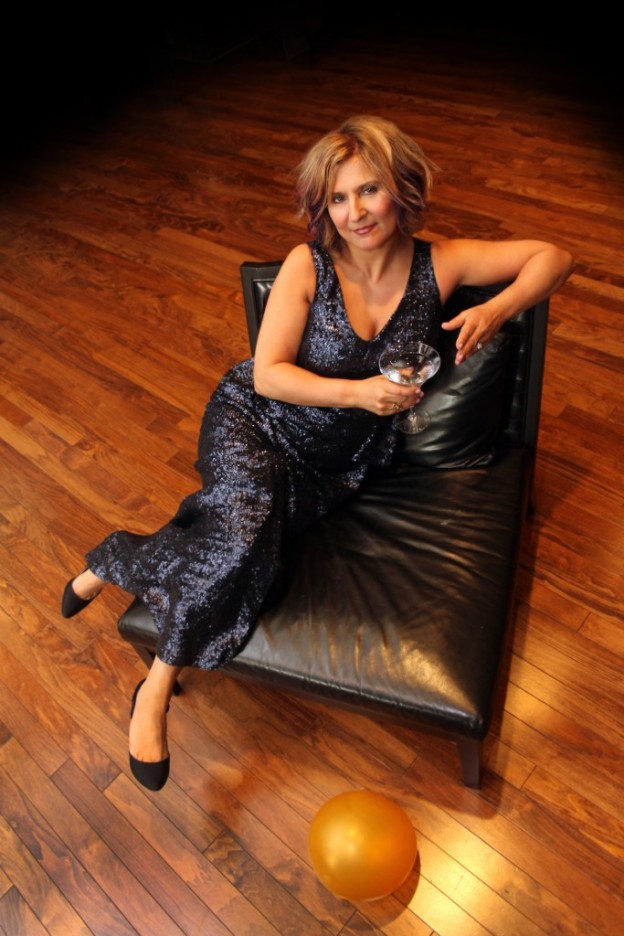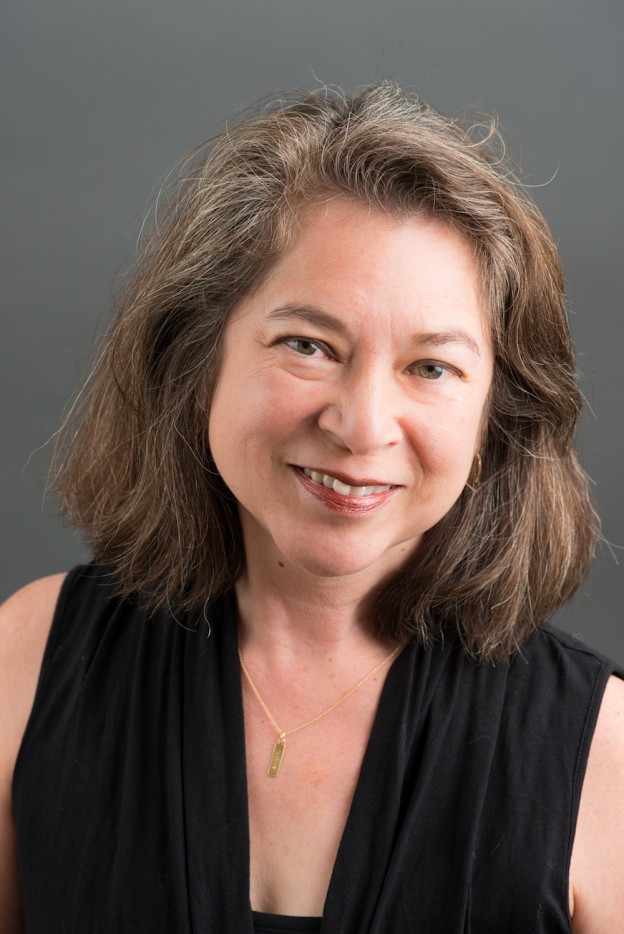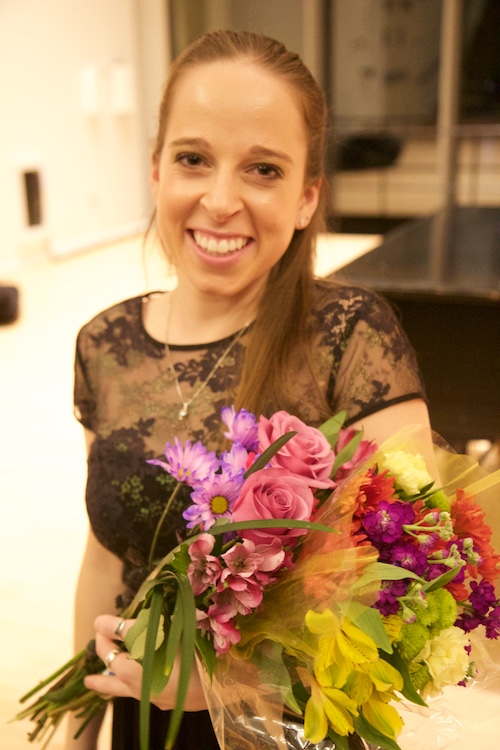Tamagawa Taiko Drum and Dance Group has a long history with Swarthmore’s Dance and Music programs, spanning eighteen years of performances and workshops. Professor Kim Arrow, Swarthmore Taiko professor, first met Tamagawa Taiko director Isaburoh Hanayagi in 1999 at a dance festival in Philadelphia. The two of them–one an expert in Japanese performing arts and one a dance professor with a budding interest in taiko–arranged Swarthmore’s first Tamagawa Taiko performance the following year. Although lightly publicized, the concert was sold out, setting the standard for annual performances since.
In addition to regular taiko performances, Isaburoh has held multiple workshops in dance, taiko, and kabuki theater, extending the relationship between Swarthmore and Tamagawa beyond just the taiko programs. In 2002, a delegation from Tamagawa traveled to Swarthmore to consult with various faculty and administrators in establishing the first Department of Liberal Arts in Japan at Tamagawa University. Later, Swarthmore President Al Bloom and Tamagawa President Yoshiaki Obara would establish an official Sister Relationship between the two institutions, symbolized by the hanging of printed cherry blossom fabric over the LPAC stairwell. In 2004, a member of Tamagawa’s Art Program held a workshop in Japanese textile design for Swarthmore art students. In 2008, Isaburoh served as a Cornell Visiting Professor of Japanese at Swarthmore, during which his taiko classes performed with the Tamagawa group to an audience of over 20,000 people at Philadelphia’s Sakura Sunday Festival. Swarthmore has benefitted from the Tamagawa Taiko program in innumerable ways, including the gift of fourteen professional-class taiko drums arranged by Isaburoh.
Since that first, modest concert at Swarthmore in 2000, Tamagawa Taiko has gained acclaim performing in New York, Boston, Philadelphia, DC, and across the Northeast. Notably, the group now performs annually for Philadelphia’s famous Cherry Blossom Festival. Amidst their growing reputation, Tamagawa Taiko returns to Swarthmore yearly for their ever-popular performances and continues to grace the campus with their music, dance, and Japanese cultural education. Says Professor Arrow, “I am aware that audiences await each Cherry Blossom season with much anticipation for this world-class event with its exceptionally trained drummers and dancers. I am very grateful that they regard Swarthmore as their second home.”
Taiko students Christine Lee ‘18 and Josie Hung ‘18 also voice their gratitude having witnessed several Tamagawa Taiko performances. “This upcoming show will be my 3rd time seeing Tamagawa Taiko perform,” says Lee. “Each time I watch their show, I am blown away by their artistry, skills, and overall performance. The drums are exhilarating, the dances are mesmerizing, and the fact that they’re students our age is all the more impressive.” Hung remembers the performances with similar awe. “The experience was truly amazing. I loved the energy, movement, and preciseness that each player brought and was completely enveloped in their performance from the moment they hit their first beat.” Hung encourages everyone, especially students outside the Music and Dance Department, to attend a Tamagawa Taiko performance. “I think it is valuable to see professional performances from people who train everyday in this art form,” she says. “I also think engaging and learning from art in different cultures is a very important and valuable lesson that every individual can take from this.”
Maya Kikuchi ’20
